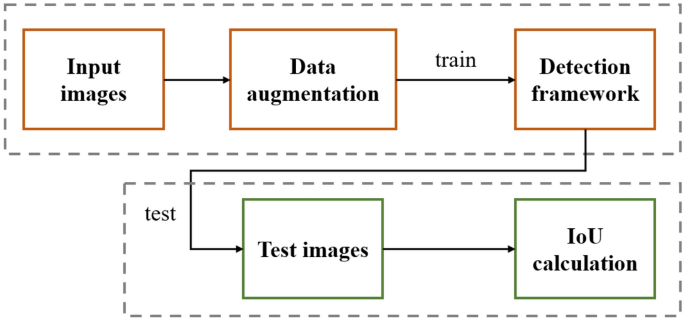1. #DataAugmentation
2. #ObjectDetection
3. #FrameworkDesign
4. #IoU
5. #DataExpansion
6. #FeaturePyramidModule
7. #FocalLoss
8. #SmoothL1Loss
9. #IntersectionOverUnion
10. #AveragePrecision
The overall framework used in this paper is dedicated to improving object detection precision and reducing overfitting. The framework starts with data augmentation, expanding the dataset to enhance training and implement an anchor-free detector for more robust results. The data augmentation methods include flipping, mirroring, luminance augmentation, and random cropping, allowing for more adaptability in detecting varied images. The detection framework uses a feature pyramid module to handle the inconsistent scale of objects. The loss functions employed, such as the focal loss and Smooth L1 loss, address issues like class imbalance and scale predictions. The testing phase involves calculating the Intersection over Union (IoU) to measure the difference between the tested bounding box and the real one. The Average Precision (AP) metric is then used to evaluate the detection performance, with specific metrics like APM and APL utilized for different object sizes. Overall, this framework employs advanced techniques and metrics to improve object detection and evaluation.
Reference: Tran, G. S. et al. Improving accuracy of lung nodule classification using deep learning with focal loss. J. Healthc. Eng., 2019 (2019).
